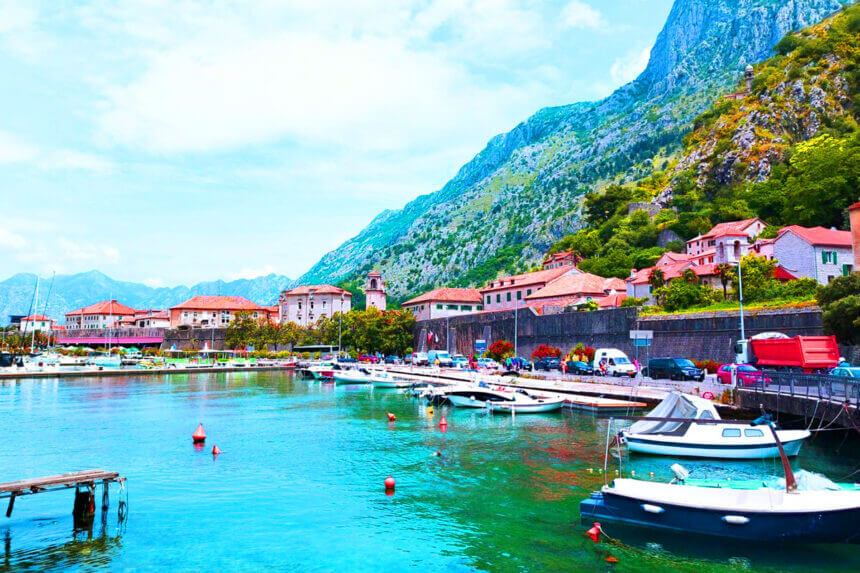Kotora Melnkalne appears across travel blogs as a poetic name for Kotor, Montenegro, but this term isn’t officially recognized. The phrase combines “Kotora” (a variation of Kotor) with “Melnkalne” (meaning “black mountain” in Latvian). This romanticized toponym refers to the stunning UNESCO World Heritage Site of Kotor, Montenegro, nestled along the dramatic Bay of Kotor on the Adriatic coast.¹
What Does Kotora Melnkalne Actually Mean
Kotora Melnkalne isn’t an official place name or widely recognized term among geographic nomenclature. The phrase appears to be a mistranslation or fabricated geographic keyword that combines elements from different languages . The word “Melnkalne” translates to “Montenegro” in Latvian, meaning “black mountain,” while “Kotora” resembles the town name Kotor.
Travel websites describe it as a “lyrical, regional variation of Kotor, Montenegro” or a “poetic variation” that captures the essence of the medieval town . However, locals in Montenegro don’t use this term, and it doesn’t appear in official tourism materials or maps. This enigmatic charm has led to multiple interpretations across different websites.
The confusion likely stems from online translation tools or content creation that mixed linguistic origins. Some websites use computer tools to change words into other languages, which can make mistakes and turn “Kotor, Montenegro” into “kotora melnkalne” instead of the correct translation . This represents one of many fabricated toponyms found across travel content.
The Real Destination Behind the Name
The actual place referenced is Kotor Montenegro, a breathtaking medieval city within the Balkans that deserves recognition under its proper name. Kotor is an absolute gem and a must-visit for anyone traveling to Montenegro, featuring an epic bay and a charming UNESCO-protected old town that showcases its Venetian past .
This UNESCO world heritage site is a well-preserved medieval walled town that sits at the foot of Mt. Lovćen at the southern end of the Boka Bay . The Old Town Kotor features narrow cobblestone streets, medieval walls that climb up the mountainside, and centuries-old churches and palaces. Unlike modern cities, this coastal location preserves authentic historical character.
Kotor’s history spans over 2,000 years within these European heritage sites. The town was ruled by Illyrians, Romans, Byzantines, Austro-Hungarians, and Venetians, who left behind renaissance palaces, baroque towers, and the Cathedral of St. Tryphon, which is more than three centuries older than the discovery of America .
Historical Roots and Cultural Context
Kotor’s rich past makes it one of Europe’s most historically significant Adriatic destinations. The modern name of Kotor probably originated from the Byzantine name for the city: Dekatera or Dekaderon . The city played crucial roles throughout different empires and civilizations, contrasting sharply with inland destinations that lack this maritime heritage.
Medieval Architecture and Venetian Influence
The Venetian architecture throughout Kotor tells stories of maritime trade, Mediterranean influence, and Balkan resilience. The old town is a maze of thin cobbled streets and small, lively courtyards where cats roam freely amongst the historic buildings and people gather at all hours .
St. Tryphon Cathedral, built in 1166, stands as the town’s most famous landmark among stone fortifications. St. Tryphon is the most famous cathedral in Old Town and one of two Roman Catholic cathedrals in Montenegro . The structure has survived earthquakes and wars, representing the town’s enduring spirit through translation roots that span multiple cultures.
Natural Beauty and Scenic Landscapes
The Bay of Kotor provides one of Europe’s most dramatic natural settings among UNESCO destinations. Often mistaken for a fjord, the bay is surrounded by limestone cliffs and creates stunning views . The contrast between the deep blue waters and towering mountains creates an almost mysterious appeal.
The Bay of Kotor developed due to tectonic processes, seismic activity, and subsidence of the ground, though many refer to it as Europe’s southernmost fjord . The viewpoints around the bay offer photographers and travelers some of the Mediterranean’s most spectacular panoramas through its unique varied meanings to different visitors.
The famous hike to St. John’s Fortress rewards visitors with breathtaking views along the fortress ramparts. The steep climb involves 1,350 steps to reach the top, taking hikers 260 meters in altitude with amazing views of the Old Town and Bay of Kotor . This challenging but rewarding hike represents one of Kotor’s must-do activities for Balkan tourism enthusiasts.
What to See, Eat and Experience
Medieval Kotor’s attractions blend historical significance with natural beauty. The Old Town serves as the main draw, where visitors can explore churches, squares, and hidden gems tucked away in narrow alleys.
Local Cuisine and Dining
Key sites include St. Luke’s Cathedral, the Clock Tower Square, and various Venetian palaces. Former palaces and centuries-old churches dominate the interior, while restaurants, boutique shops, and museums fill out the rest .
The local cuisine reflects Mediterranean and Balkan influences. Fresh seafood from the Adriatic coast appears on most menus, alongside traditional dishes that showcase the region’s agricultural heritage. Restaurants range from rustic taverns to elegant waterfront dining, all full of flavor and hospitality .
Boat tours on the Bay of Kotor provide different perspectives of the region. Trips usually involve various stops at popular spots around the Bay of Kotor, with historical information, swim breaks, and sometimes local rakija .
Visiting Kotor: Practical Travel Guide
The best time to visit Kotor depends on your preferences for weather and crowds. Shoulder season (April, May, September, and October) offers the best balance of weather, crowds, and hotel prices . Summer season brings overcrowding with tourists, packed beaches, high temperatures, and peak hotel prices .
Transportation to Kotor is straightforward. Tivat Airport sits about 20 minutes away, with regular buses throughout the day costing around €4 one way . The bus station is just a few minutes walk from Old Town, making it easy to get in and out of the city .
Accommodation options range from historic stone houses within the Old Town walls to modern hotels with bay views. Montenegro uses the euro as official currency, which makes life easier for travelers, and costs seemed more budget-friendly than traveling within the European Union .
However, Kotor faces significant tourism challenges. The town experiences an overwhelming influx of around 15,000 visitors daily, a number that strains the small community . On average, 2 or 3 cruise ships dock at Kotor most days during summer, with some ships carrying as many as 5,000 passengers .
Common Misconceptions and Questions
Many travelers encounter “Kotora Melnkalne” online and wonder if it’s a real place or official name. The answer is no among proper geographic nomenclature. The phrase “kotora melnkalne” doesn’t fit any language and might be a mistake or made up to trick people . These mistranslated placenames represent a growing problem in travel content.
This confusion can lead to several problems for travelers. If you search for “kotora melnkalne,” you might find websites about Kotor, but they use the wrong name, which makes you wonder if the website provides reliable information .
When planning your trip, use “Kotor, Montenegro” for accurate information, official tourism resources, and reliable booking platforms. The real destination offers everything that these lyrical variations promise, but with verifiable information and proper local context.
Bottom Line: “Kotora Melnkalne” refers to Kotor, Montenegro—a genuine UNESCO World Heritage Site that deserves to be known by its proper name. This medieval coastal gem offers stunning natural beauty, rich history, and authentic Balkan culture, making it one of Europe’s most rewarding travel destinations when visited thoughtfully and with respect for local communities.






